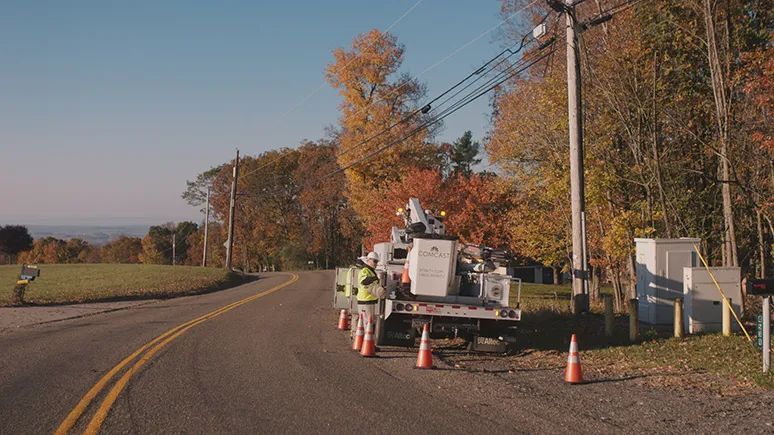Cable broadband networks are critical infrastructure that connect the vast majority of the United States. In fact, 99% of homes in cable’s footprint have access to gigabit speeds. But what many don’t realize is how crucial the “last mile” portion of those networks is to connecting the millions of Americans who benefit from broadband today, and those who will be reached in the near future.
Digging deeper: With federal broadband funding efforts on the horizon, and as cable providers continue to build out their networks, it’s worth understanding how the “last mile” works and how it serves as a crucial link to the digital world.
What Is the Last Mile?
Last-mile infrastructure is the physical part of a broadband network that serves as the final leg connecting the provider’s network to a home or building – the hookup between the larger backbone of the network to the end point. To put it more simply, the last mile is where data bridges from infrastructure to device.
- This portion is the most visible in neighborhoods and residential areas, as it acts as the link between the premises and the outside world – just like a driveway connects a home to a main road, where all the activity and bustle are coming from.
- Last-mile infrastructure is closest to the end user or device, and is the key to enabling next-generation speeds, including 10G and its suite of technologies.
- Here, DOCSIS technologies are used to increase connection speeds by updating equipment and devices, eliminating the need to lay new cable.
- This is where the network fans out to reach all the endpoints (e.g. homes, devices, businesses).
Building the Network
The last mile is one of the most expensive and hardest parts of the network to build and operate. This is especially true in rural and remote areas where populations are low, homes and buildings are far apart, and tough terrain poses difficult challenges.
Ingenuity needed: Cable providers use innovative solutions to reach far-out and unserved communities most in need of broadband connectivity:
- Cable providers, including Midco and Mediacom, use fixed wireless to reach homes in the mountains, or farmers who work in grain elevators or water towers, by relying on an existing broadband network to connect relay towers, and extending a signal miles beyond where the physical wires stop.
- Over the past few years, Charter, Comcast, Cox, and GCI have been expanding 5G networks (the fifth-generation of mobile networks and an upgrade to the bandwidth and speeds available on mobile data networks) to give people faster speeds and better coverage.
Connecting Every American
Cable providers have poured billions of dollars into building out broadband networks to nearly every corner of the country. At the same time, they have forged a myriad of partnerships with local governments, private businesses, nonprofits, and community organizations to raise funds for broadband buildouts in hard-to-reach areas.
As federal and state governments distribute billions in federal funds for broadband construction, the cable industry will continue to collaborate and do its part to ensure that their networks can reach every American, down to the last mile, and that everyone has the chance to reap the opportunity broadband offers.








